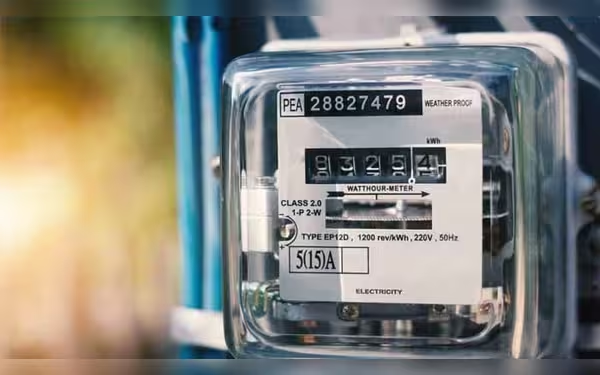Thursday, July 4, 2024 05:40 PM
NEPRA Introduces New Electricity Tariffs for Consumers
- Residential consumers face fixed charges based on monthly electricity consumption levels.
- Commercial consumers experience adjustments in fixed charges, with significant increases for some.
- NEPRA's decision aims to bridge the gap between fixed and variable charges.
 Image Credits: gnnhd
Image Credits: gnnhdNEPRA has introduced new electricity tariffs, impacting fixed charges for residential, commercial, and industrial consumers. The changes aim to enhance revenue streams for Distribution Companies (DISCOs) and promote a more sustainable cost-sharing mechanism.
The National Electric Power Regulatory Authority (NEPRA) has recently announced the implementation of new electricity tariffs effective from July 1. These tariffs bring changes to the fixed charges that consumers will have to pay along with their regular electricity usage costs.
Under the new structure, residential consumers will now be required to pay fixed charges based on their monthly electricity consumption levels. For example, those using 301-400 units will have a fixed charge of Rs200 per month, while consumers in the 401-500 units bracket will pay Rs400. The fixed charges increase progressively for higher consumption levels, with users exceeding 700 units facing a monthly fixed charge of Rs1,000.
Commercial consumers will also see adjustments in their fixed charges. Those with a load of less than 5KW will now pay Rs1,000 per month, while those with 5KW or more will experience a 300 percent increase in fixed charges, rising to Rs2,000. Industrial consumers will face significant hikes in fixed charges based on their category and consumption levels.
NEPRA's decision to revise the fixed charges is aimed at assisting Distribution Companies (DISCOs) in enhancing their revenue streams. The current tariff structure highlights a notable gap between fixed and variable charges, with fixed charges contributing only two percent to revenue despite constituting 72 percent of the total cost per unit.
The introduction of the new electricity tariffs by NEPRA signifies a shift in the cost-sharing mechanism between consumers and distribution companies. While these changes may lead to increased costs for consumers, they are designed to ensure a more sustainable revenue model for DISCOs in the long run. It is essential for consumers to be mindful of their electricity usage patterns to manage their expenses effectively under the new tariff regime.













